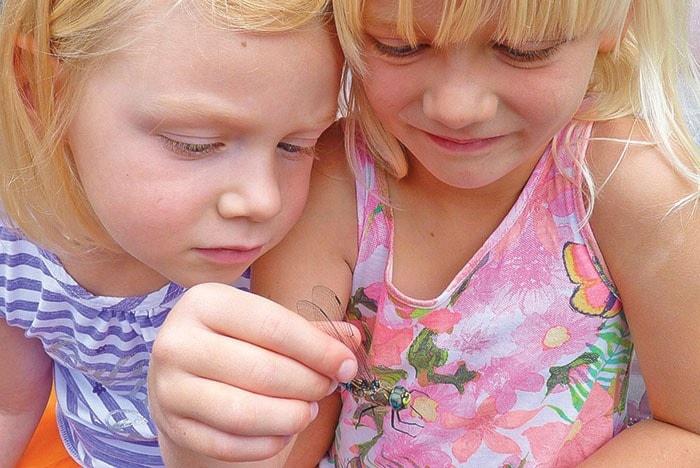Most children enjoy nothing more than netting and studying flying backyard insects.
Dragonfly populations peak in mid-August, and make an ideal study subject with their robust bodies and strong wings. These lovely bugs sport jewel-like faces, while tinted wings with dark veins impart a stained-glass appearance.
On a calm day, the soft crackle of cellophane is the magical melody of dragonfly wings … the sound of opening a plastic cereal bag or crumpling tissue paper.
The insect order Odonata (Greek for “toothed jaws”) contains dragonflies and damselflies. They’re fancifully named: dashers and dancers and darners and skimmers; emeralds and bluets and gliders and cruisers. And, if you’ll recall, they’re the most ancient insect of all.
Some 250 million years ago, Canada Goose-sized dragonflies – Protodonata – ruled the skies, predating dinosaurs by more than 100 million years and birds by 150 million.
A good bug, the dragonfly consumes many times its weight in mosquitoes and other nuisance insects each day.
To safely handle a dragonfly, capture it in a net, then grasp all four wings with your thumb and forefinger. Slowly remove from net, being careful to prevent injuries. These flying dragons can nibble, so keep fingers away from their mouths; contrary to popular belief, the dragonfly’s long abdomen is not a stinger.
Cellophane sounds and rainbow colours make this ancient and beautiful insect a joy to study. Always release the creature soon after capture, as they live for only a month or two.
Email Christine at: wildernesswest@shaw.ca.
